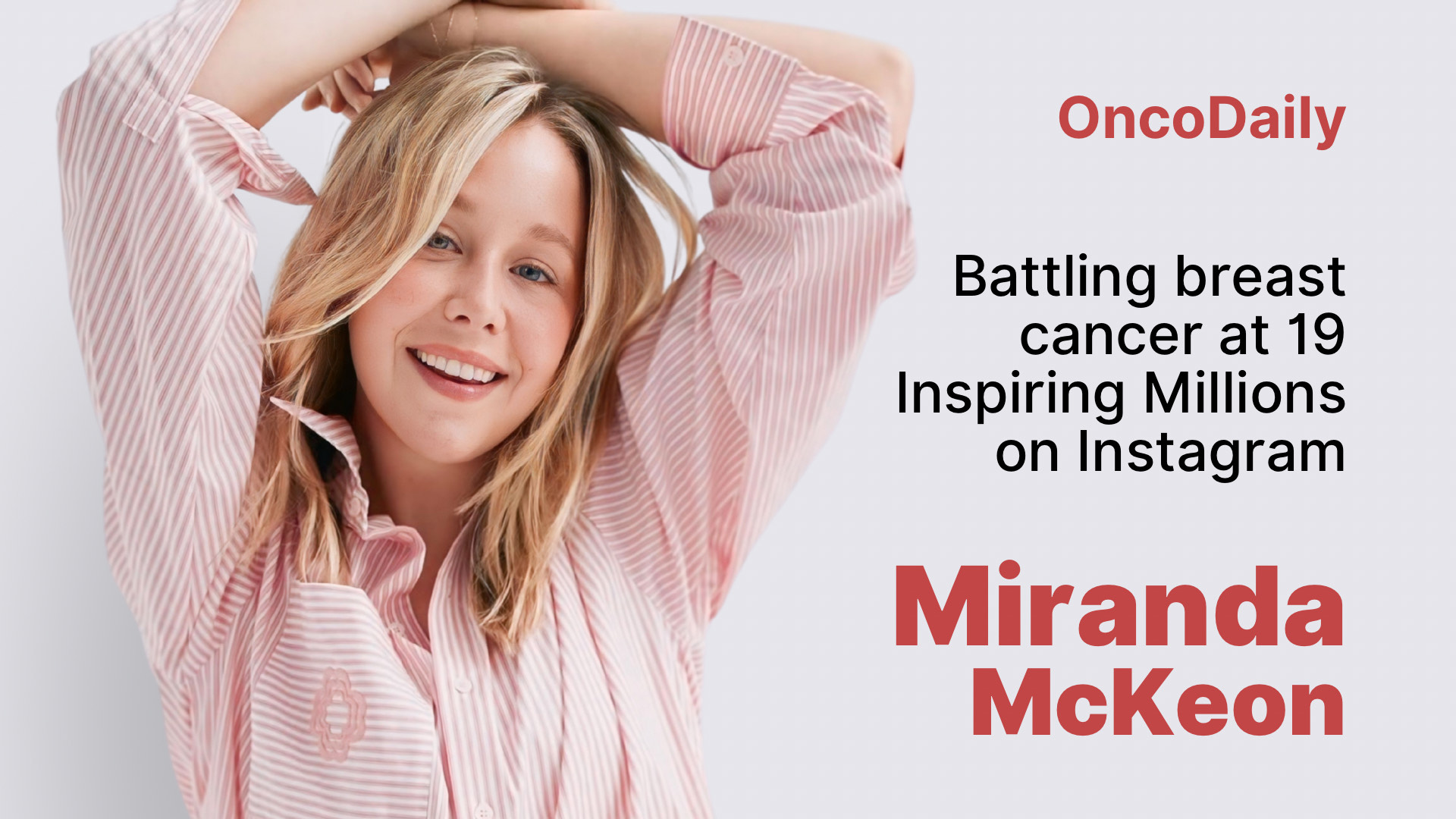Miranda McKeon, a young actress from “Anne with an E,” defied age-related stereotypes when diagnosed with stage 3 breast cancer at 19. This article explores her courageous journey, from diagnosis to remission, and her advocacy efforts to raise awareness about breast cancer in young adults. We delve into her treatment, her experience with medically induced menopause, and how she uses social media platforms like Instagram to inspire others. Through her story, we discuss key strategies for breast cancer prevention and the importance of early detection.
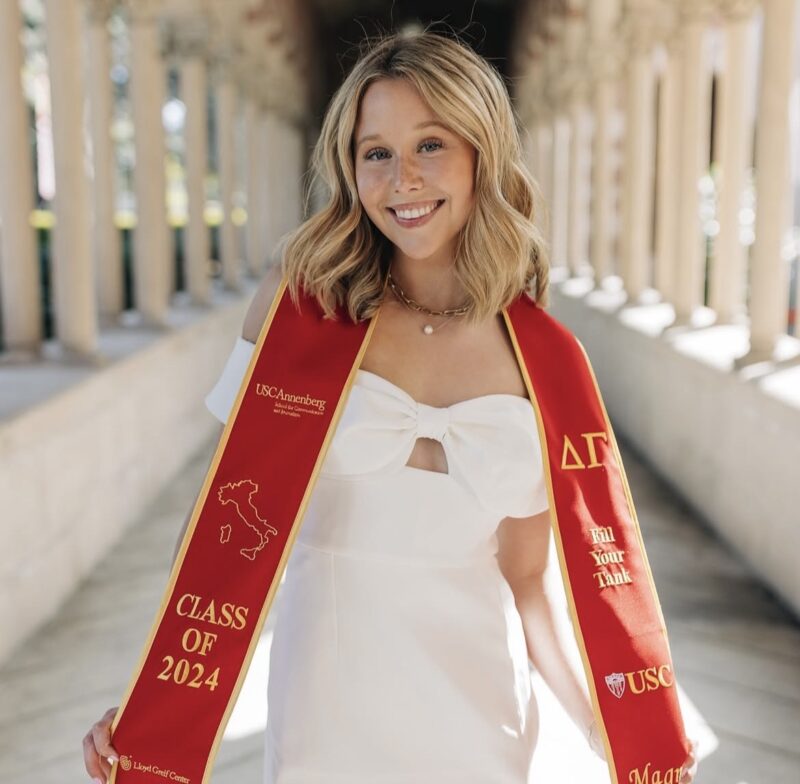
Breast Cancer Statistics in Young Adults
Breast cancer is the most common cancer among adolescents and young adults (AYAs) aged 15 to 39, accounting for 5.6% of all invasive breast cancer cases. Over the past two decades, there has been a gradual increase in breast cancer incidence among women aged 20 to 49. Young non-Hispanic Black women are more likely to be diagnosed with aggressive forms of breast cancer compared to non-Hispanic White women.
Early detection is crucial for young adults, as breast cancer in this age group tends to be more aggressive and is often diagnosed at later stages. Unlike older women, young adults typically do not qualify for routine breast cancer screening, emphasizing the need for self-exams and awareness of unusual symptoms. Stories like Miranda McKeon’s highlight the importance of self-advocacy and pushing for medical evaluation even when symptoms seem unusual for one’s age. Early detection significantly improves survival rates, making it vital for improving outcomes in young adults with breast cancer.
How Did Miranda McKeon Get Diagnosed with Breast Cancer?
In May 2021, during her summer break after her freshman year at the University of Southern California, Miranda found a small, jelly-bean-sized lump in her right breast while adjusting her bra at her family’s beach house in Asbury Park, New Jersey. Initially, her doctor reassured her that breast cancer was extremely rare in someone her age, especially since she had no family history.
However, after an ultrasound and biopsy, Miranda received a call from her doctor while on a flight to San Francisco for a summer program. The doctor informed her that she had cancer, which had already spread to her lymph nodes. This news was confirmed through additional tests upon her return to New Jersey, leading to a diagnosis of stage 3 breast cancer.
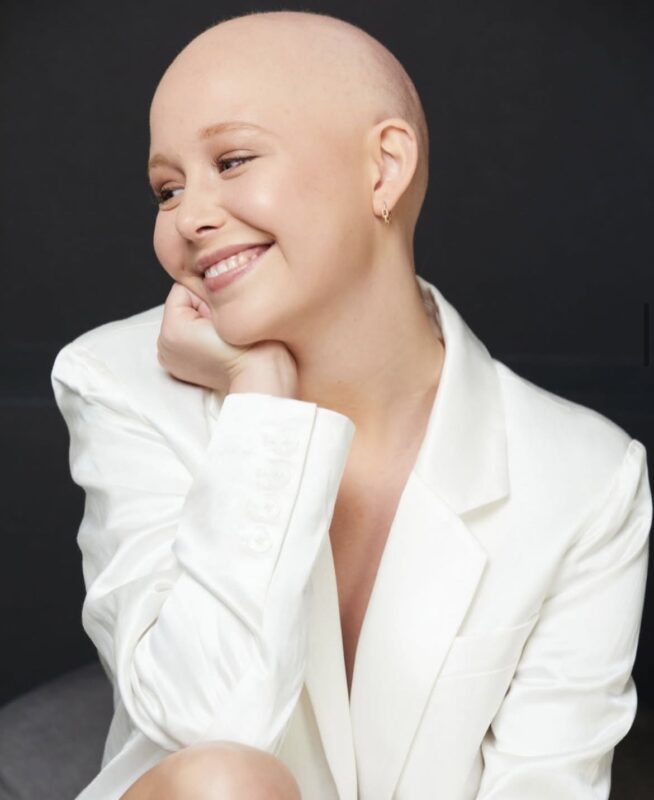
What was the Prognosis
Miranda McKeon was diagnosed with stage 3 breast cancer at the age of 19. The prognosis for stage 3 breast cancer varies based on several factors, including the specific characteristics of the cancer and the patient’s overall health. Generally, stage 3 breast cancer indicates that the cancer has spread to nearby lymph nodes but not to distant parts of the body. The prognosis is typically more favorable if the cancer is hormone receptor-positive and HER2-negative, as these types often respond well to targeted therapies.
In Miranda’s case, her cancer was hormone-positive, which meant she was eligible for hormone therapy as part of her treatment plan.
What Was Miranda McKeon’s First Reaction to Her Diagnosis?
Miranda McKeon’s initial reaction to her breast cancer diagnosis was a mix of shock and disbelief. When she discovered the lump in her breast, she immediately thought of the worst-case scenario but then tried to reassure herself by researching online, thinking that breast cancer was extremely rare in someone her age. However, upon receiving the diagnosis, she described the moment as “surreal” and felt like she was in a movie. Despite the initial shock, she quickly moved into a proactive mode, scheduling appointments and beginning treatment.
In her own words, she felt like everything changed in that moment, but she also found strength in the support from her loved ones and the medical team. Miranda’s resilience and determination to share her journey publicly have been key components of her response to the diagnosis
What Breast Cancer Treatments Did Miranda McKeon Receive?
Miranda McKeon received a comprehensive treatment plan for her stage 3 breast cancer diagnosis at the age of 19.
Miranda McKeon’s Heartfelt Choice to Preserve Fertility During Breast Cancer Battle
Before starting chemotherapy, Miranda underwent egg freezing to preserve her fertility. This involved 10 days of hormone injections to stimulate egg production. Fertility preservation was crucial because chemotherapy can lead to infertility. This process provided a “safety net” for future family planning. Considering fertility at such a young age was unexpected and challenging, but Miranda viewed it as a proactive measure. While she hopes to conceive naturally in the future, having frozen eggs provides reassurance and options for her future family plans.
“Pink is my new color!!!!! It is with a heavy yet hopeful heart that I share news that I was recently diagnosed with breast cancer”
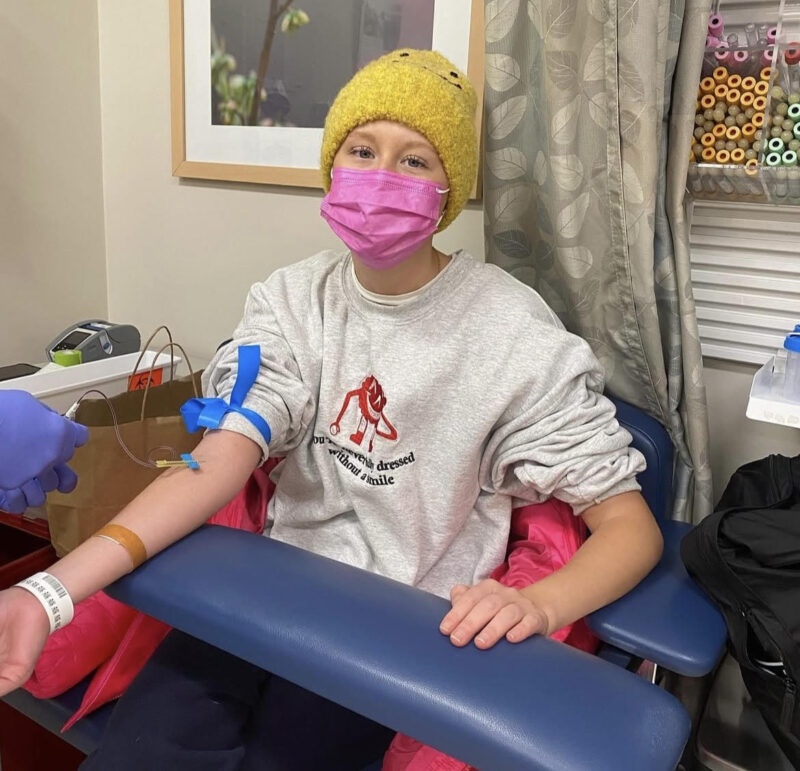
Chemotherapy
Miranda underwent 8 rounds of ACT chemotherapy over a period of four months, with infusions every other week. The chemotherapy sessions were challenging, causing significant side effects such as hair loss, which she described as the worst part of her treatment. Despite the difficulties, Miranda maintained a positive outlook, viewing her treatment as her “job” during that time. She began chemotherapy immediately after her egg retrieval procedure to preserve fertility.
Radiotherapy
Miranda received 25 sessions of proton radiation therapy following her mastectomy. Radiation therapy was used to target any remaining cancer cells in the area where the tumor was located. While radiation can be taxing, Miranda focused on the positive aspects of her treatment, emphasizing her resilience throughout the process. Proton therapy is a precise form of radiation that minimizes damage to surrounding healthy tissues, which is beneficial for young patients.
Double Mastectomy with Reconstruction
“Today is the big day!!! I’ve arrived in SF to have the surgery that I’ve been preparing for: I’ll be having a double mastectomy”
Miranda McKeon underwent a double mastectomy as part of her treatment plan, which involved removing both breasts to reduce the risk of cancer recurrence. The surgery included breast reconstruction to restore the appearance of her breasts after the mastectomy. This procedure was emotionally challenging but necessary for her cancer treatment and long-term health. The surgery and reconstruction required a significant recovery period, adding to the overall physical trauma of her treatment.
How Did Miranda Mckeon Overcome Breast Cancer
Miranda was declared cancer-free in February 2022 after completing her intensive treatment regimen. This included eight rounds of chemotherapy, a double mastectomy with reconstruction, and 25 sessions of radiation therapy. Her determination and resilience played a significant role in her recovery. Miranda McKeon overcame breast cancer through a combination of medical treatments and strong support from her loved ones.
Mental and Emotional Challenges
Miranda McKeon faced significant mental and emotional challenges during her breast cancer journey. Initially, she struggled with feelings of isolation and self-doubt, particularly during chemotherapy, which also affected her self-confidence and body image due to physical changes like hair loss. She experienced anxiety and insomnia, which further complicated her mental health. Despite these challenges, she found strength in her resilience and the support from her loved ones.
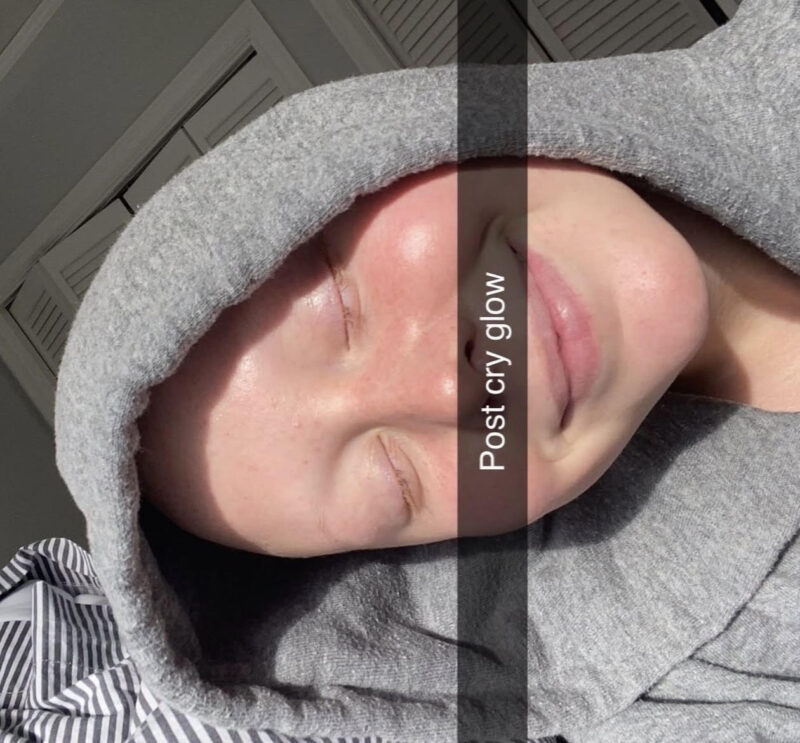
To manage her mental health, Miranda sought help through therapy and antidepressants. She also found solace in sharing her story on social media, which helped her connect with others and maintain a sense of normalcy.
Miranda’s experience with cancer gave her a new perspective on life. She learned to appreciate the fragility and beauty of life, which has been a transformative aspect of her journey. Despite the challenges, she emerged with a stronger sense of self and a renewed purpose to advocate for cancer awareness and support young survivors. Her support system played a crucial role in helping her navigate the emotional rollercoaster of cancer treatment, and she remains focused on her advocacy work and inspiring others with her resilience and courage.
Support From Family and Friends
Miranda McKeon received immense support from her family and friends throughout her breast cancer journey. Her family, particularly her parents, played a crucial role in bolstering her during the most challenging times. Her father, for instance, was one of her number one supporters, often providing positive verbal affirmations and emotional support. Her mother, Jill, also moved out for two months to be with Miranda, ensuring she had constant support during her treatment.

Miranda’s friends were incredibly supportive as well, helping her cope with the emotional and physical challenges of cancer treatment. They provided a sense of normalcy and connection, which was vital during a time when she felt isolated due to her illness.
The support from her loved ones allowed Miranda to stay motivated and positive, even on the toughest days. She credits them with helping her navigate the emotional rollercoaster of cancer treatment, emphasizing that they were her “healing forces” during that time. Through their support, Miranda was able to find strength and resilience, which ultimately helped her overcome her cancer diagnosis and become an advocate for cancer awareness.
How Miranda McKeon Uses Instagram to Raise Cancer Awareness
Miranda McKeon utilized social media platforms like Instagram to advocate for cancer awareness and share her personal journey with breast cancer. Through her Instagram account, she discusses various topics including her cancer diagnosis, self-advocacy, and her experiences with treatments and recovery. Miranda often shares updates about her life post-cancer, highlighting her resilience and the importance of support during such challenging times.
She uses Instagram to connect with others who have gone through similar experiences, fostering a community of support and understanding. Miranda’s advocacy extends to amplifying the voices of the metastatic breast cancer community, showing her commitment to raising awareness about different stages of breast cancer.

Miranda’s active engagement on Instagram demonstrates her dedication to using social media as a tool for advocacy and personal storytelling. Her openness about her cancer journey has inspired many, and her platform serves as a resource for young adults facing similar health challenges.
Miranda McKeon’s Collaborations with Health Organizations
Miranda McKeon has collaborated with several health organizations to raise awareness about breast cancer and support related initiatives. One of her notable collaborations is with Sientra Supports, a leader in breast reconstruction. Miranda partnered with Sientra to share her personal journey with breast cancer and reconstruction, participating in a 360-campaign that included influencer marketing, philanthropic activations, and social media activities. This partnership aimed to promote Sientra implants and support breast cancer awareness, particularly during Breast Cancer Awareness Month. The campaign also included a bra donation program in collaboration with the Brem Foundation’s Re-Bra initiative, which resulted in the donation of over 2,000 bras.
“Breast cancer awareness month hits hard for me every year as I reflect on how much my life has changed since my stage III diagnosis at 19”
Miranda also co-hosted the #LightUpMBC Live event, a global campaign supported by METAvivor, a non-profit organization dedicated to funding research for metastatic breast cancer. This initiative involves lighting up landmarks worldwide to raise awareness and funds for Stage 4 metastatic breast cancer research. The event features musical performances and inspiring patient stories, with the goal of driving funds for METAvivor’s research program. Miranda’s involvement in these campaigns highlights her commitment to using her platform to advocate for cancer awareness and support critical research initiatives.
What Is Miranda McKeon’s Life Like After Breast Cancer?
After overcoming breast cancer, Miranda McKeon has focused on rebuilding her life and using her experience to advocate for cancer awareness. She is fully immersed in college life, balancing her studies with occasional auditions, and emphasizes the importance of being present in this phase of her life without rushing into her career too quickly. Miranda also chose to study abroad in Rome, Italy, as part of her junior year, which feels like a significant step in her healing journey, offering her both excitement and a sense of challenge.

Miranda continues to share her story on social media platforms like Instagram and TikTok, using her platform to raise awareness about breast cancer and support others who are going through similar experiences. She has become an inspiration to many by openly discussing her journey and the lessons she has learned. Additionally, Miranda has been medically induced into menopause at 22 due to hormone suppressants like Lupron, which she uses to prevent cancer recurrence. She openly shares her experiences with menopause on social media, helping to normalize discussions around early menopause and its challenges.
Miranda’s experience with cancer has given her a new perspective on life, making her more aware of the fragility and beauty of life. She practices gratitude and continues to learn and grow from her experiences. Overall, Miranda McKeon is thriving beyond her cancer diagnosis, focusing on her education, advocacy, and personal growth while navigating the ongoing challenges of her treatment’s aftermath.
You Can Also Read In Memory of TikToker Bailey Hutchins and Her Battle Against Colorectal Cancer by OncoDaily
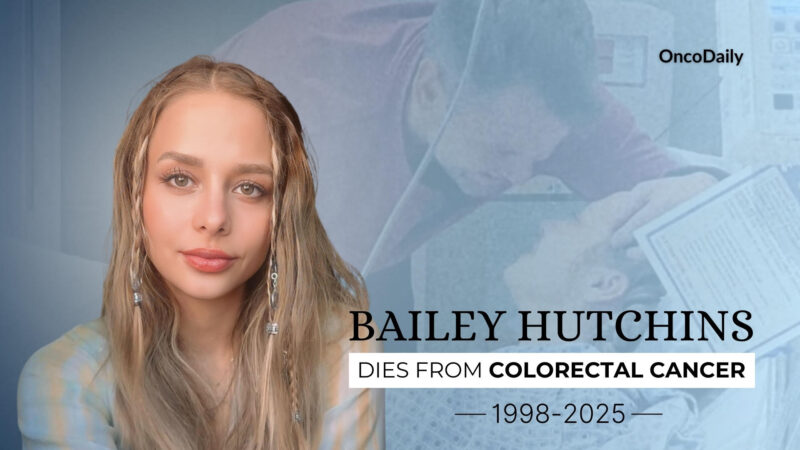
Miranda McKeon’s Fill Your Tank: Sparking Meaningful Connections
Fill Your Tank is a company founded by actor, writer, and online creator Miranda McKeon. Inspired by road trips with friends, Miranda designed card games to foster meaningful connections among friends, families, partners, and even strangers.
The flagship product is a deck of 150 thought-provoking questions, ranging from lighthearted favorites to deep reflections, encouraging personal storytelling and stronger bonds in any social setting.
Miranda’s mission is to promote connection and community through curiosity and conversation, believing these interactions enrich life and relationships. As CEO and President, she leads product development, marketing, and growth strategies while running an internship program. Fill Your Tank actively engages with its community on Instagram, sharing updates, behind-the-scenes content, and user experiences.
What Cause Breast Cancer in Young Adults?
Breast cancer in young adults is influenced by several factors that can increase the risk and impact the prognosis. Genetic mutations, particularly in the BRCA1 and BRCA2 genes, are a significant cause of early-onset breast cancers. These genes are tumor suppressors, and mutations can lead to unchecked cell growth, increasing the risk of breast and ovarian cancer. A family history of breast or ovarian cancer, especially in close relatives like mothers or aunts, also significantly increases the risk for young women, especially if relatives were diagnosed at a young age.
Reproductive and hormonal factors, such as early menarche and late first childbirth, can increase breast cancer risk due to longer exposure to estrogen, which can fuel tumor growth. Additionally, young women who received radiation therapy to the chest area during childhood or adolescence have an increased risk of developing breast cancer later in life. Lifestyle factors, such as alcohol consumption, may also play a role in increasing breast cancer risk in young women. Furthermore, younger women are more likely to have higher-grade and hormone receptor-negative tumors, which can be more aggressive and harder to treat. Understanding these factors is crucial for early detection and prevention strategies in young adults.
You Can Also Watch Young Colorectal Cancer Survivor: Mila’s Journey of Resilience & Hope by OncoDaily
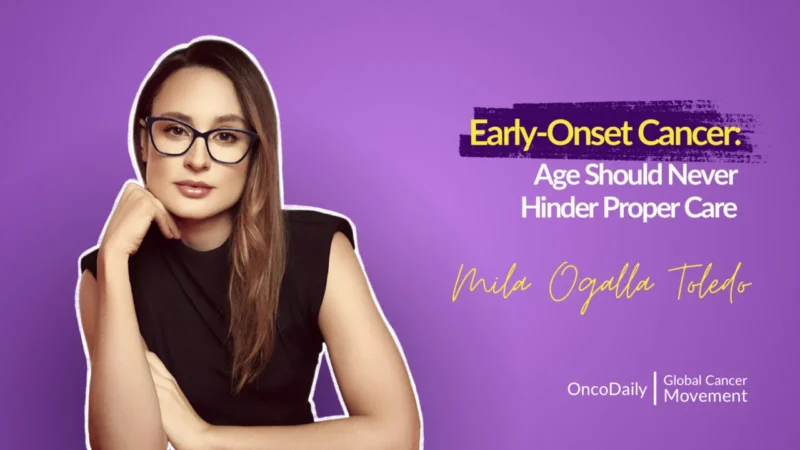
How Can Breast Cancer Be Prevented?
Regular mammograms and other screening methods are vital for the early detection of breast cancer, significantly improving treatment outcomes and survival rates.In addition to regular screenings, specific lifestyle changes can significantly lower the risk of developing breast cancer.
Regular Screenings and Early Detection
BRCA mutations in the BRCA1 and BRCA2 genes significantly raise the risk of breast and ovarian cancers, with women facing up to an 85% lifetime risk for breast cancer and 40-60% for ovarian cancer. Preventive options include increased screening, risk-reducing surgeries like prophylactic mastectomy and salpingo-oophorectomy, medications, lifestyle changes, and genetic counseling.
Many individuals opt for surgeries to lower their cancer risk, and the National Cancer Institute outlines the benefits of these options. Additionally, some may choose chemoprevention with medications such as tamoxifen or aromatase inhibitors, which can reduce breast cancer risk, as noted by the Mayo Clinic.
Women aged 40 and older should have annual mammograms, as early detection through mammography can identify breast cancer before symptoms develop, leading to less invasive treatments. The American Cancer Society reports a 5-year survival rate of 99% for localized breast cancer, compared to just 29% if diagnosed at a later stage (American Cancer Society, 2021). Regular mammography can reduce breast cancer mortality by approximately 15-30% among women aged 40-74 (U.S. Preventive Services Task Force, 2016). Prioritizing screenings allows women to catch breast cancer early, resulting in more effective treatments and better outcomes.
Lifestyle Changes
A healthy diet is vital for reducing breast cancer risk, focusing on fruits, vegetables, whole grains, and lean proteins. Research indicates that women with a diet high in fruits and vegetables have a 20% lower risk of breast cancer (American Institute for Cancer Research, 2018). Regular exercise is also important; at least 150 minutes of moderate aerobic activity weekly can reduce breast cancer risk by about 25% (National Cancer Institute, 2020).
Limiting alcohol intake is crucial, with recommendations of no more than one drink per day. Consuming two to three drinks daily increases the risk of breast cancer by 20-30% (American Cancer Society, 2021). Maintaining a healthy weight is essential, as obesity raises the risk by 30-60% in postmenopausal women (World Health Organization, 2020). Lastly, avoiding tobacco is key; women who smoke are 25% more likely to develop breast cancer compared to non-smokers (Cancer Research UK, 2019).
Written by Aharon Tsaturyan, MD
FAQ
What is Miranda McKeon known for?
Miranda McKeon is known for her acting career, particularly her role as Josie Pye in the Netflix series "Anne with an E." She is also recognized as a writer, blogger, and creator of the company Fill Your Tank, which develops card games to foster connections among people.
What are Miranda McKeon's educational and professional pursuits?
Miranda McKeon is a student at the University of Southern California, studying communications and entrepreneurship. Professionally, she is the CEO and President of Fill Your Tank, a company she founded. She also works as a content creator and has been involved in various marketing and consulting roles.
What was Miranda McKeon's cancer diagnosis?
Miranda McKeon was diagnosed with stage III hormone-positive breast cancer at the age of 19. This diagnosis was extremely rare for someone her age, especially with no family history of cancer.
What treatments did Miranda McKeon undergo for her cancer?
Miranda's treatment included eight rounds of chemotherapy, a double mastectomy with reconstruction, and 25 sessions of radiation therapy. Before starting chemotherapy, she also underwent egg freezing to preserve her fertility due to the potential side effects of treatment.
How has Miranda McKeon's life changed after her cancer diagnosis?
Miranda's cancer diagnosis significantly changed her life, making her more aware of the fragility and beauty of life. She has become an advocate for cancer awareness and openly discusses her journey on social media. She is now cancer-free but continues to manage the aftermath of her treatment, including medically induced menopause due to hormone suppressants.
How does Miranda McKeon manage her health post-cancer?
After her cancer treatment, Miranda McKeon has been managing her health by taking hormone suppressants like Lupron, which induce menopause to prevent cancer recurrence. She also continues to advocate for cancer awareness and shares her experiences with menopause and cancer recovery on social media platforms.
How did Miranda McKeon cope with the emotional impact of losing her fertility due to cancer treatment?
Miranda McKeon underwent fertility preservation measures like egg freezing before starting chemotherapy. She has spoken about the emotional challenges of dealing with medically induced menopause at a young age, which has been a significant adjustment in her life.
How did Miranda McKeon handle the overwhelming decisions regarding her reconstructive surgery after cancer treatment?
Miranda faced conflicting opinions from different doctors regarding her reconstructive surgery, which left her feeling overwhelmed and frustrated. She eventually found a doctor who specialized in reconstruction and used Sientra implants due to their safety profile, which helped alleviate some of her concerns.
How does Miranda McKeon use Instagram for cancer advocacy?
Miranda McKeon uses Instagram to share her personal journey with breast cancer, discuss cancer-related topics, and amplify the voices of the metastatic breast cancer community. She shares updates about her life post-cancer, highlighting her resilience and the importance of support during such challenging times.
What are the most common types of cancer in adolescents and young adults (AYAs)?
The most common cancers in AYAs include thyroid cancer, breast cancer, melanoma, lymphomas (Hodgkin and non-Hodgkin), sarcomas (bone and soft tissue), and testicular cancer. Other cancers in this age group include brain and spinal cord tumors, cervical cancer, colorectal cancer, and leukemia.
How does cancer in AYAs differ from cancer in other age groups?
Cancer in AYAs often involves a mix of cancers typically seen in children and older adults. Unlike childhood cancers, which are often linked to genetic mutations, AYA cancers can be influenced by both genetic and environmental factors. Additionally, the types of cancers and their prevalence vary across different age ranges within the AYA group, with some cancers becoming more common as individuals age
What are the unique challenges faced by AYAs with breast cancer?
AYAs with breast cancer face several unique challenges. They are more likely to present with aggressive subtypes and advanced disease at diagnosis compared to older women. AYAs often require systemic staging and may benefit from clinical trials, especially for locally advanced or metastatic disease. Additionally, they are more likely to carry germline cancer predisposition mutations, necessitating genetic testing.
How common is breast cancer in AYAs, and what are the survival outcomes?
Breast cancer is the most common cancer among AYA women, accounting for about 5.6% of all invasive breast cancers. Despite its rarity, breast cancer in AYAs tends to be diagnosed at later stages and is often more aggressive, leading to poorer survival rates compared to older women. In the U.S., approximately 12,000 AYA women are diagnosed with invasive breast cancer annually, and more than 1,000 die from the disease each year.
How does Instagram influence health awareness and promotion?
Instagram is increasingly used for health promotion and prevention due to its large user base and visual content capabilities. Healthcare organizations and influencers leverage Instagram to disseminate health information, with studies showing that 57% of users have searched for health-related content on the platform.
What are the potential risks of using Instagram for health information?
While Instagram can be a powerful tool for health awareness, it also poses risks. The platform's curated content can lead to unrealistic body expectations and negatively impact mental health, particularly among young users. Studies indicate that excessive Instagram use is linked to higher rates of anxiety, depression, and body dissatisfaction
